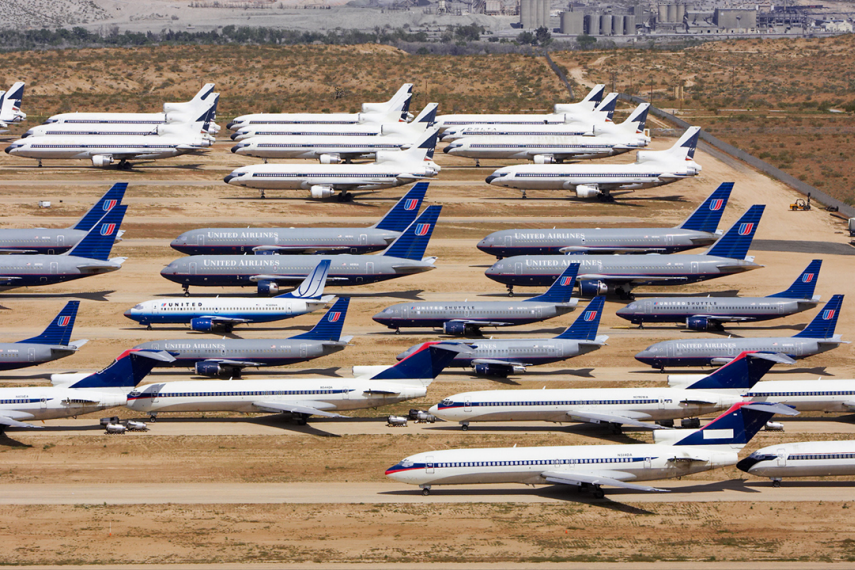
U.S. domestic flights dropped 63% from the first week of January though the first week of April, and U.S. international flights were down 82% over the same period, according to RadarBox. A substantial portion of the remaining flights in both categories are cargo flights, so the cuts in passenger flights are even sharper.
MBA Aviation estimates that the U.S. had about $34 billion of aircraft parked at the end of the first quarter, second only to China’s $41 billion of grounded jets. Globally, narrowbodies represented 64% of parked jets, versus 56% of fleets. Interestingly, parked RJs and turboprops are a slightly lesser share of grounded aircraft than their share of fleets.
Carriers may be down-gauging for lesser passenger volumes or simply flying shorter domestic routes during the crisis. The uncertainties for travel are leading to many temporary aircraft arrangements.
Demand for aircraft storage services is splitting about 50% for short-term, 50% for long-term storage so far, says Dave Bixler, president of Jet Yard. Bixler is expecting the demand for both services, along with aircraft teardowns, which Jet Yard also does, to increase substantially in coming months.
However, “There’s a question of whether there will be enough storage space,” Bixler says. His company has added a new facility, at Marana Regional Airport, just a few minutes away from its existing one at Pinal Park, in Arizona. Jet Yard now has 90 acres for storage, four teardown pads large enough for two Boeing 747s and 17,000 sq. ft. of warehouse space.
The Jet Yard exec says airlines are storing many grounded aircraft now at their airports because they can offset airport charges with the economy of using their own mechanics to do required inspections.
Carriers choosing short-term storage--leaving engines and auxiliary power units (APU) on aircraft and doing minimal checks—pay less. Long-term storage requires removing and preserving engines and APUs and deeper checks, Bixler notes.
Jet Yard does the 7-, 14-, 30- and 45-day checks required by aircraft maintenance manuals. "A typical check might require turning on the APU and running it for 10 minutes, rotating the tires 180 degrees, lubricating the cables and doing a visual inspection for corrosion,” Bixler explains.
In any case, keeping an aircraft in in-service condition means an airline can exploit its parts a lot faster if it chooses to tear it down and use the parts for its still-operating aircraft.
Although Jet Yard expects to do teardowns, Bixler says most operators have not made that decision yet.
Ascent Aviation Services has not yet seen many teardowns due COVID-19, but Mike Scott, the company’s sales director, predicts an increase in teardowns in the next three to six months as the coronavirus situation clarifies.
However, “We had already seen a large uptick in aircraft lease returns and retirements in the past nine months, prior to the current situation,” Scott says Ascent, which offers storage and teardown services at Marana and Tucson, Arizona, is storing aircraft but “it is difficult to know how many will be temporarily parked, versus retired,” says Scott.
Ascent’s facility at Marana has 460 acres of flight-line and storage space and 60 acres for teardowns. Its Tucson site has 37 acres for storage and five acres for teardowns.





